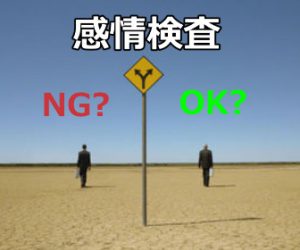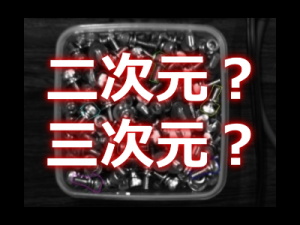People are inspected on their emotions.

Visual inspection is said to be difficult to automate because of its sensory nature. To put it another way, visual inspection is emotional.Visual inspectors do not want to cause leakage, so they try to change the angle by hand to make it visible, look at things they do not need to look at, and even look at things they "somehow" do not see.This invariably results in excessive quality, and even good quality items are discarded.On the other hand, most of the objects we see are good products, and only occasionally defective products are produced.Therefore, it is very difficult to sustain concentration, and sometimes an extraordinary defective product is missed.When an extraordinary defective product is missed, the inspection specifications are strengthened and control is further tightened, resulting in even more excessive quality.However, it is difficult to reduce the number of missed defects to zero because the work is performed by human operators.Thus, visual inspection can be considered a cause of missed defects and excessive quality.
To begin with, I would like to consider what Japanese quality is. Japanese quality, a quality that Japan can boast to the world, must be high in performance, have smart functions, be hard to break, and be free from individual differences. To what extent is "not a scratch on the product from any angle" required? Some Japanese may be concerned about it. However, it is clear which is more sought after on a global scale: high cost with no scratches, or low cost with a few scratches.
Consider manufacturing overseas. Overseas sites are aware that "they are not as meticulous as the Japanese. They do not trust visual inspections from the beginning. Therefore, it is highly likely that they will actively introduce inspection equipment to reinforce their weak points. Even if the detection capability is a little inferior, they are "not meticulous" and will accept the fact that they may not be able to detect something that is difficult to see. Claims are only made when defective products are received by those who perceive them to be claims. If the recipient is not "meticulous" as well, no claim will be made. Therefore, zero claims can be easily achieved. In addition, since defects that are difficult to see are not detected, the percentage of good products will also increase. Visual inspection? No more need for visual inspection," and the introduction of inspection equipment is further accelerated.
How about the Japanese workplaces? They feel the need to introduce inspection equipment, but are reluctant to do so, saying, "We tried it, but it didn't work," or "We can't use it unless it has the same capabilities as visual inspections. Then they try to conduct visual inspections overseas, but there are no Japanese there. Even if they bring in the same quality standards, they cannot understand "Why is this defective? The reason why visual inspectors do not stick around is not only a question of wages.
Visual inspection cannot meet the appearance standards of global values. If this situation continues, Japanese manufacturing will not be able to compete in terms of manufacturing efficiency, quality, and cost. The Japanese manufacturing industry will not be able to compete in terms of manufacturing efficiency, quality, and cost.


